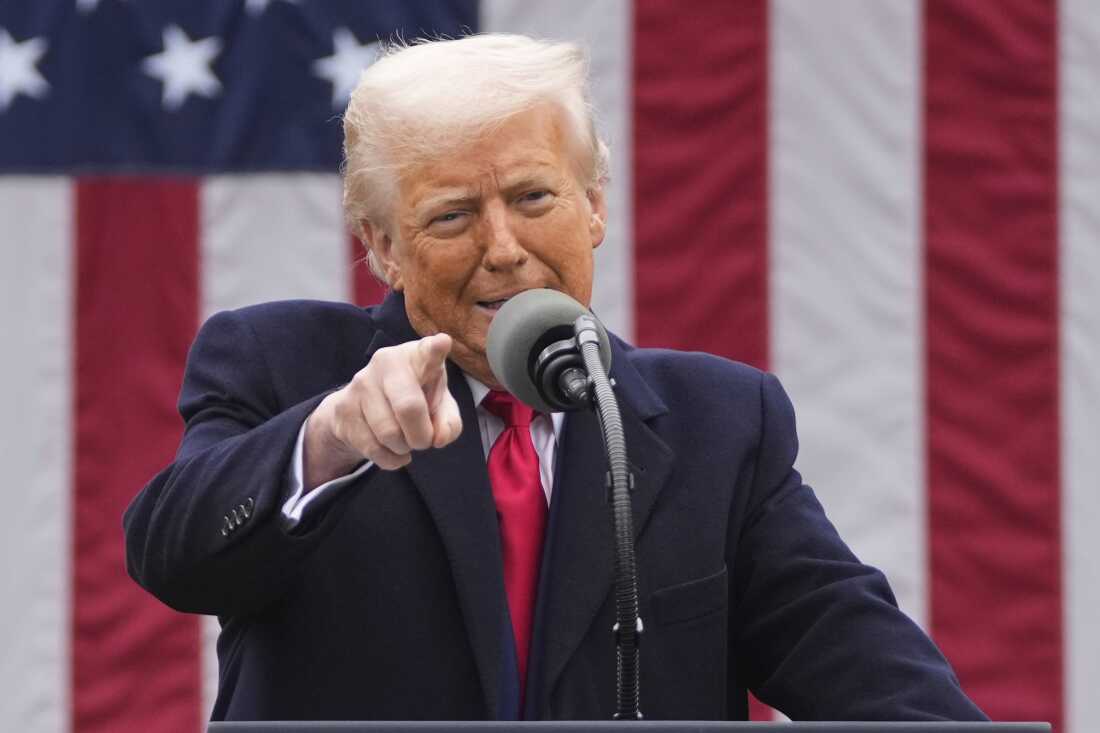Ex-President Donald Trump has put forward a novel economic initiative designed to alleviate the financial strain on American families. This proposal, which entails distributing $2,000 rebate checks linked to tariffs, has ignited discussion among financial experts, legislators, and the general populace, prompting inquiries into its prospective effects on rising prices, international commerce, and the overall economic landscape.
Trump’s suggestion arises amidst continuous conversations regarding the handling of economic repercussions stemming from global trade strategies. Tariffs, defined as levies applied to imported products, have historically served as a mechanism for the United States to safeguard local businesses, shape international relations, and accrue funds. Nevertheless, they can also result in elevated consumer prices and complexities within worldwide trade connections. Through the provision of refund checks matching specific tariff earnings, the concept aims to counteract the heightened expenses encountered by American families, effectively channeling funds gathered from import duties straight back to the populace.
Grasping the operational aspects of the discount
The $2,000 rebate concept is designed to function as a direct compensation to consumers for higher prices resulting from tariffs on imported products. Essentially, if tariffs drive up the cost of goods, the government would send payments to eligible Americans to neutralize some of that financial pressure. Proponents argue that this approach could provide immediate relief for families struggling with rising prices, particularly for essential items like food, clothing, and electronics.
However, detractors warn that the proposal might lead to unforeseen outcomes. Although it could briefly boost discretionary spending, certain financial experts caution that it might worsen inflationary trends. By infusing capital into the market without a commensurate rise in available goods, prices could escalate even more, possibly eroding the intended advantage of the refund. Furthermore, questions arise regarding the funding mechanism for such an initiative, its practical execution, and the potential for political division stemming from its introduction.
Economic and political implications
The proposal also carries significant political weight. By linking the rebates to tariffs — a hallmark of Trump’s previous trade policies — the measure appeals to a base that supports aggressive protectionist strategies. It positions the former president as a champion of the “everyday American,” directly addressing concerns about the cost of living and economic inequality. At the same time, it revives debates over the effectiveness of tariffs themselves. Critics argue that tariffs often hurt domestic businesses that rely on imported materials, potentially undermining the long-term health of the economy.
From a broad economic standpoint, these rebates have the potential to shape how consumers act. With an injection of $2,000 per payment, households might boost their expenditures, thereby bolstering economic expansion in the near term. Businesses in retail and services could experience heightened demand, and specific industries might enjoy a temporary surge. However, economists are split on whether this initiative would result in lasting enhancements to the economic climate or simply offer a brief stimulus with restricted enduring impact.
Possible impacts on commercial ties
Another intricate aspect involves the repercussions for global commercial interactions. Tariffs represent a divisive instrument, frequently inciting reciprocal actions from commercial allies. Although rebate payments could mitigate the internal perception of tariffs, they do not eradicate the fundamental obstacles to trade. Nations impacted by U.S. tariffs might persist in levying their own duties or pursue alternative strategies to safeguard their sectors, potentially escalating commercial friction.
Moreover, enterprises operating within international supply networks might encounter difficulties if tariffs and their associated reimbursements are not meticulously applied. Businesses dependent on imported resources could experience unpredictable cost variations, potentially disrupting manufacturing timelines and impacting job stability. Policymakers would be tasked with weighing the national advantages of rebates against the wider repercussions for both global trade and local industries.
The public response and feasibility
Public sentiment regarding the proposed rebate has been varied. A segment of the American populace embraces the concept as a straightforward method to ease financial burdens, especially amidst escalating living expenses. Conversely, others regard it with apprehension, doubting the feasibility of distributing such funds and the enduring effects on the economy. Both social platforms and news organizations have amplified expressions of endorsement and disapproval, mirroring wider disagreements within public discourse concerning trade regulations, governmental expenditure, and economic involvement.
Implementation feasibility is another critical factor. Issuing $2,000 payments to millions of Americans would require robust administrative infrastructure, including accurate identification of eligible recipients, coordination with banking systems, and mechanisms to prevent fraud. Past experiences with stimulus checks and rebate programs highlight the challenges inherent in executing large-scale payments efficiently. Any delays or errors could undermine public confidence and reduce the program’s effectiveness.
While the concept remains largely theoretical, it has revitalized conversations regarding the optimal methods to assist families grappling with financial strain. These rebate payments highlight a wider discussion concerning the interplay between commercial regulations and national well-being: how to safeguard American businesses without imposing excessive costs on consumers. Lawmakers, financial experts, and the general populace are expected to persist in examining the plan’s viability, its potential economic consequences, and its political implications in the coming months.
Ultimately, the $2,000 tariff rebate proposal highlights the persistent conflict in economic governance: reconciling immediate citizen aid with enduring stability for both domestic and international economies. As discussions progress, it is yet to be determined if this plan will gain momentum, be altered, or simply become another suggestion among many designed to tackle living expenses.
Regardless of the outcome, Trump’s rebate idea has already sparked critical conversations about how trade and economic policies intersect with everyday life, highlighting the challenges of crafting policies that are both equitable and economically sound.




